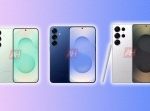- Smartphone manufacturers aren’t shipping their new devices with chargers anymore.
- If you’re going to buy a new charger, it might as well be fast and versatile, like the RavPower 61W, our pick for the best wall charger.
- We’ve included our top picks for best wireless chargers and best car chargers, too.
Phone makers are starting to ship their newer smartphones without chargers with the assumption that you can simply use the chargers you’ve amassed from your older devices.
That might make some sense if only newer phones didn’t have faster charging capabilities than your old ones. Indeed, your old charger from your two-year-old phone may not make the most of the fast charging in your newer phone.
If you’re looking to make the most of your phone’s charging speeds, buying a new charger yourself is now the best way to go. We should note, however, that no charger we’ve encountered supports Samsung’s 45W fast charging. If you own a Samsung phone, your best bet is to buy Samsung’s own 45W charger.
We’ve rounded up the best phone chargers of all kinds that we’ve tested and researched. Whether you want a wireless charger, a car charger, a charging station to juice up multiple devices at once, or your standard wall outlet to charging cable setup, we have a pick for you.
When buying a smartphone charger, you’ll want to consider a few things. It’s a good idea to keep in mind where and when you want to charge your phone. If you want to charge it at night, perhaps a wireless charger will be best, as those tend to charge devices more slowly. If you spend a lot of time in your car, you may want a car charger that will keep your phone juiced up while you drive.
Of course, with so many charging accessories out there, it can be hard to find the right ones for your needs. That, however, is exactly why we’ve put together this guide.
Here are the best phone chargers:
- Best charging cables: Anker PowerLine+ USB-C to USB 3.0 cable
- Best wall charger: RavPower 61W wall charger
- Best wireless charger: Moshi Otto Q
- Best car charger: NekDek PD 45W car charger
- Best charging station:
Amazon
The Anker PowerLine cables are durable, support fast charging, and work with iPhone or Android devices.
Pros: Very durable, range of models and colors, fast charging speeds
Cons: Can get expensive
If you’re looking for a high-end, reliable charging cable, then it’s worth buying a cable from the Anker PowerLine series, especially the braided models. Anker makes cables for lightning ports on iPhones as well as USB-C on Android devices. They’re also the top pick in our guide to the best charging cables.
The durable cables have a braided nylon covering to ensure that no matter how you stretch or bend the cables, they will last for years to come. Most other charging cables are made of cheap plastic and are easily broken.
The cables also come with a pouch and a Velcro cable tie so they don’t get tangled up. The cables come in a few different lengths so you can get a longer or shorter cable depending on your needs. They support charging speeds of up to 60 watts, which should be enough for most fast-charging tech.
Some cables come with different standards of USB, whether it’s USB 2.0, 3.0, and beyond. If you like the idea of using the charging cable as a data cable to transfer files, photos, and videos to a computer, you’d do well to look for a model that supports more recent standards, like USB 3.0. Data speeds shouldn’t be an issue with USB-C-to-USB-C cables, as they support incredibly fast data speeds. — originally written by Christian de Looper, updated by Antonio Villas-Boas.
For iPhone chargers with standard USB-A ports: Anker Powerline III Lightning Cable
For iPhone chargers with USB-C ports: Anker Powerline+ III MFi Certified Lightning Cable
For Android chargers with USB-C ports: Anker Powerline+ III USB C to USB C Cable
For Android chargers with standard USB-A ports: Anker PowerLine+ USB-C to USB 3.0 Cable
The best wall charger
Amazon
The RavPower 61W Dual Port Charger has a USB-A and USB-C port, offers enough power to charge laptops as well, and it looks better than other wall chargers.
Pros: Inexpensive, versatile, well-designed
Cons: None at this price
If you want a high-end, versatile wall charger, then the RavPower 61W Dual-Port Charger is the way to go.
The charger has two USB ports built into it, including a USB-A and USB-C port. The charger supports fast-charging speeds of up to 61 watts, which means it can not only charge your phone, it can also be used to charge your laptop and other devices.
The design of the charger is pretty nice, too. You can get it in black or white. The charger is relatively compact and slim, and it has retractable pins so you can easily slip it into your bag.
So what about downsides? Well, there really aren’t any. The charger is even relatively inexpensive for what it has to offer. Sure, that’s more expensive than some of the cheaper options out there, but with two ports and 61-watt charging, it’s worth the cost.
The best wireless charger
Amazon
The Moshi Otto Q has a great design, plus it supports fast wireless charging, cutting down on the time it takes to juice up your device.
Pros: Classy design, support for fast wireless charging
Cons: Doesn’t come with an adapter
Looking for a well-designed, high-end wireless charger that supports relatively fast wireless charging? The Moshi Otto Q is the way to go. It’s also the top pick in our guide to the best wireless chargers.
The charger is covered in a nice looking gray fabric and it has a silicone ring on the top to ensure that your phone doesn’t slip off of the charger when it’s in use.
If you have a Quick Charge adapter, you’ll get 7.5-watt fast-charging on an iPhone or up to 10 watts on a compatible Android device. In other words, no matter what phone you have, you should get relatively fast charging speeds with this wireless charger.
There are a few downsides, but not all that many. The charger doesn’t come with a power adapter, so you’ll have to buy that separately or use one you already have, and the LED light can be a little bright in the dark.
Despite the downsides, this wireless charger is a top choice for many reviewers, including us.
The best car charger
Amazon
This car charger has a sleek and stylish design, plus it supports fast charging speeds and comes with a USB-C cable.
Pros: Two ports, fast charging speeds, sleek design, relatively inexpensive
Cons: None
Your car may be one of the best places to charge your phone, mainly because you might be draining the battery while you drive by using maps to navigate or playing music. Plus, you’re staying within the confinement of your car and you won’t need to remove it from the charger until you arrive at your destination. The NekTek PD 45W Type-C car charger is our favorite one.
The charger has a USB-C port built into it, which is great for modern devices. But it goes a step beyond that by adding in a standard USB-A port for older charging cables. In other words, no matter what kind of charging cable you have, this car charger should support it.
It also supports fast charging and it can even charge up your laptop, Nintendo Switch, headphones, and other devices. To sweeten the deal, the car charger comes with a USB-C cable.
Considering the versatility of the charger and the relatively low price, there really aren’t any downsides to it.
The best charging station
Satechi
The neatly charges five devices simultaneously and includes two USB-C PD ports, two USB-A ports, and a Qi charging pad.
Pros: Charges up to five devices at the same time, holds devices in place neatly, affordable, meets standard charging speeds on most devices, can fast charge iPhone, includes USB-C charging ports
Cons: Short charging cables are sold separately, won’t meet top charging speeds on some Android devices
Households with several smartphones and/or tablets, and wireless charging earbuds will appreciate the by reputable tech accessories maker Satechi.
The Dock5 can charge five devices at the same time with its variety of two USB-C ports, standard USB-A ports, and a Qi wireless charging pad. Devices can be organized neatly with the silicone dividers that prevent scratching.
The USB-C ports are rated at 20W each, and will be best used on smartphones with fast charging, or devices with large batteries, like a tablet. For reference, the ‘s 20W USB-C ports exceed the iPad Pro’s 18W included charging brick and the iPhone 11 and iPhone 12’s 18W fast charging capabilities.
The standard USB-A ports are rated at 12W each, which makes them more suitable for smartphone charging at decent speeds.
The wireless Qi charging pad is rated at 10W, which is double what the AirPods Pro charging capacity. Unfortunately, the won’t charge AirPods Pro faster, as they’ll only accept up to 5W for wireless charging. Still, the wireless charging pad can be used to charge a smartphone up to 10W wirelessly, which is slow, but still an option.
The doesn’t come with the short charging cables you see in the images — those are sold separately and range between $9 to $18, and you’ll have to use your existing cables. That’s a shame, because charging four wired devices with longer cables will make for a messier look than what you see in Satechi’s images. Still, the convenience is undeniable
Powered by WPeMatico





